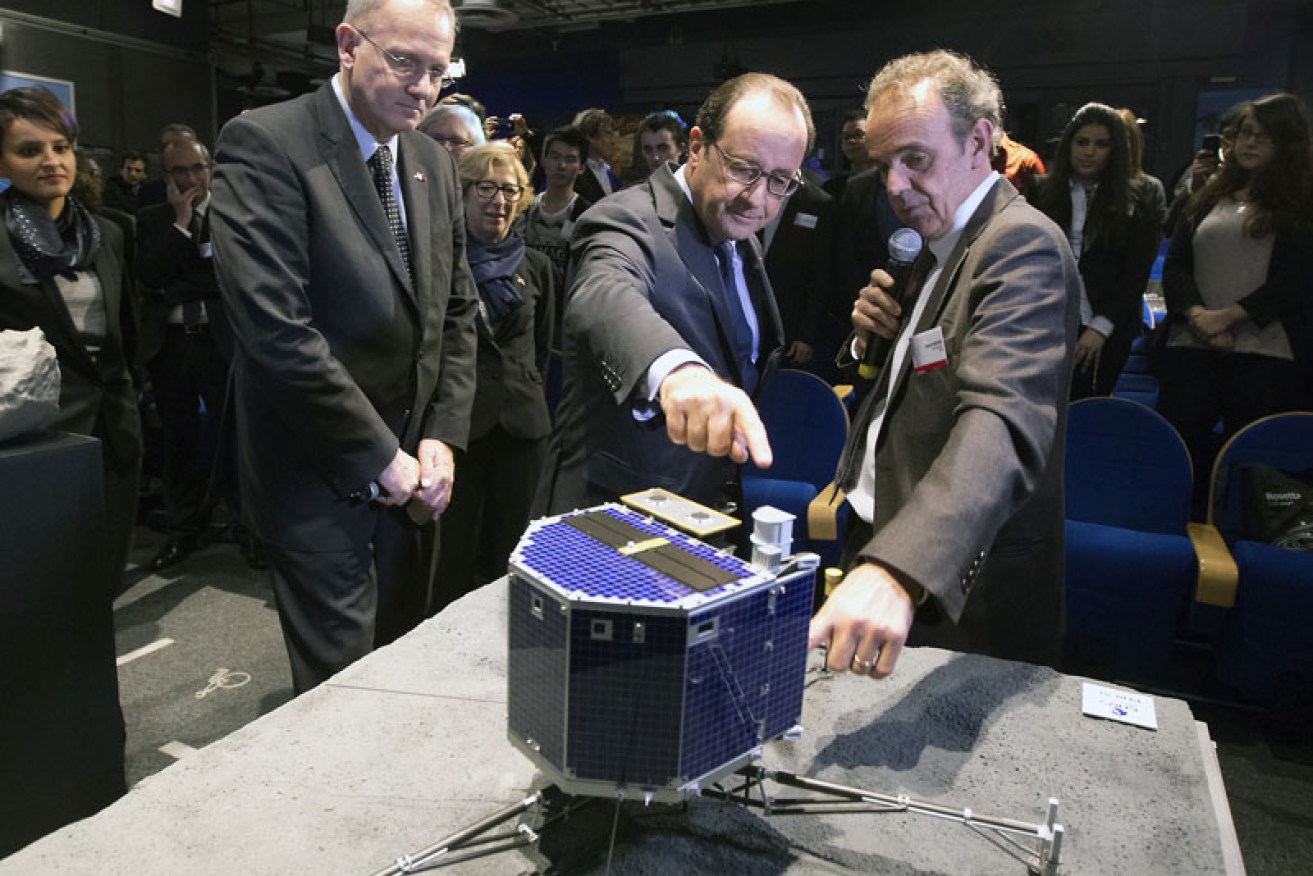Comet touchdown, so what’s new for robot lab Philae?

Getty
A year ago on Thursday, the world held its collective breath as a European spacecraft dropped a tiny robot lab onto the surface of a comet hurtling towards the sun.
The 12 months since that bumpy landing have yielded many exciting scientific finds, and more than a little drama, as Philae intermittently phoned home from its alien host between long bouts of sleep.
Now, after four months without word, perched on comet 67P/Churyumov-Gerasimenko, ground controllers are hoping for a last chance to make contact and even do some science before the lander finally runs out of steam.
• Spacecraft mystery stuns NASA scientists
• Is the new Apple TV really all it’s cracked up to be?
• A challenger to Xbox and Playstation has arrived
“We hope to resume a series of scientific operations with Philae in the coming weeks,” lander scientist Jean-Pierre Bibring told AFP.
Assuming the lab’s instruments are working and its solar panels tilted at the right angle, they could have several contacts with the robot beginning this week and instruct it to run experiments, possibly even the drill it has not yet successfully deployed.
Conditions will be best from the end of November to the beginning of December.

The Philae lander reached the comet 67P after 10 years in space.
Philae touched down on 67P on November 12 last year after a 10-year, 6.5b km journey through space, piggybacking on European mothership Rosetta, now orbiting the comet.
Philae sent home data from about 60 hours of comet sniffing and prodding with eight of its 10 instruments, before going into standby mode on November 15, 2014.
The robot lab’s current status is unknown.
In theory, Philae should have enough solar power at its current distance from the sun – some 270m km – and a healthy core temperature.
But the window for contact is short, said Mark McCaughrean, senior science advisor at the European Space Agency.
“I wouldn’t put bets on it, but it’s maybe four to eight weeks wide, where Philae gets enough power and we are close enough,” he said.
The ground-breaking mission was conceived to learn more about the origins of life on earth.
Comets are pristine leftovers from the solar system’s formation some 4.6b years ago. Some experts believe they smashed into our infant planet, providing it with water and the chemical building blocks for life.
There is of course the possibility that we may never hear from the lander again.
“There comes a point next year when we’re going to have to declare the search over even if we don’t have definitive proof that Philae is dead,” said Professor McCaughrean.








